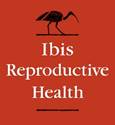|
|
|
|
Volume 15, Number 2 |
September 2018 |
|
|

Global Female Condom Day was established by advocates in 2012 as a worldwide day of action, education, and advocacy highlighting the female condom. Learn more about the history of the day and find out more about past events at femalecondomday.org.
Female condoms have been a popular topic in the media lately! Below we highlight recent coverage from media outlets in the United States, India, and Nigeria describing the benefits of the female condom.
In early September, Elite Daily published an explainer about the female condom. Titled, What are female condoms? This is how they work & where to buy them, the article focuses primarily on the nitrile version of the female condom available in the United States. Author Hannah Schnieder outlines the basics of where to obtain the FC2, how to use them, and why the female condom may be the contraceptive method of choice for many people.
NewsBytes in India published 5 reasons why you should use a female condom in August, which also explores the benefits of a non-latex, partner-controlled contraceptive method.
Also based in India, the website LatestLY published How to use a female condom, a user guide to the female condom that includes a step-by-step video as well as written instructions.
Pulse, an online publication from Nigeria, shared the benefits of polyurethane and nitrile female condoms in 3 weird facts no one ever tells you about female condoms including that they are receptive-partner controlled and ideal for people with a latex allergy.
Lifestyle blog HelloGiggles published a recent piece on the FC2 to debunk common misconceptions about the usability of the female condom and the popularity of this contraceptive option across the globe.
Veru Health, the maker of the FC2 female condom, was awarded 75% of a three-year female condom tender by the South African government in August. In the first year alone, Veru can supply up to 29.8 million female condoms in the South African market out of a total supply of 40 million. As we reported in past newsletters, advocates in the United States have been surprised by abrupt changes Veru has made in the availability of their product in the US market. We are interested in hearing from advocates in RSA about any experiences or opinions they may have about this new tender award.
|
Our archive of completed research on cervical barriers and female condoms now reflects the peer-reviewed published literature through September 1, 2018. Below, we also highlight presentations relevant to this body of work.
Chastain Mann presented findings from the 2014-2017 Whisper Woman's Condom pilot in Malawi highlighting consumer and retailer experiences and opinions with the female condom in her presentation "The woman's condom: Lessons learned from Malawi and considerations for female condoms in West Africa."
In "Willingness to pay for female condoms: Is there a potential in the commercial market?", Marina Tiroyan of i+solutions presented findings of a study of consumer willingness and ability to pay for female condoms from the consumer and provider perspective in Botswana, Kenya, and Mozambique.
Denise van Dijk of Veru outlined a guaranteed access model intended to improve demand for the FC2, in her presentation "The FC2 female condom: Guaranteed access as the key to success in public sector" and used evidence from research on the South African female condom program to support this model.
Follow the link above or click here to access the slides from each of these important presentations on the RHSC website.
|

Mission of CBAS
Established in 2004, the Cervical Barrier Advancement Society (CBAS) aims to raise the profile of cervical barrier methods, including diaphragms, caps, female condoms, and other devices, and to share the latest news and resources related to these methods.
CBAS contact information
For more information, contact Laura Fix, CBAS Executive Director, at info@cervicalbarriers.org.
CBAS is coordinated by Ibis Reproductive Health.

www.ibisreproductivehealth.org
|
|
|
|
|
Note: We are always updating our research listings on the CBAS website. Please contact us at info@cervicalbarriers.org with study updates or information on new research related to cervical barriers or female condoms.
Join CBAS
To comment on anything you read in the CBAS newsletter or to contribute a story, event, or news item, please email CBAS.
|
|
|

